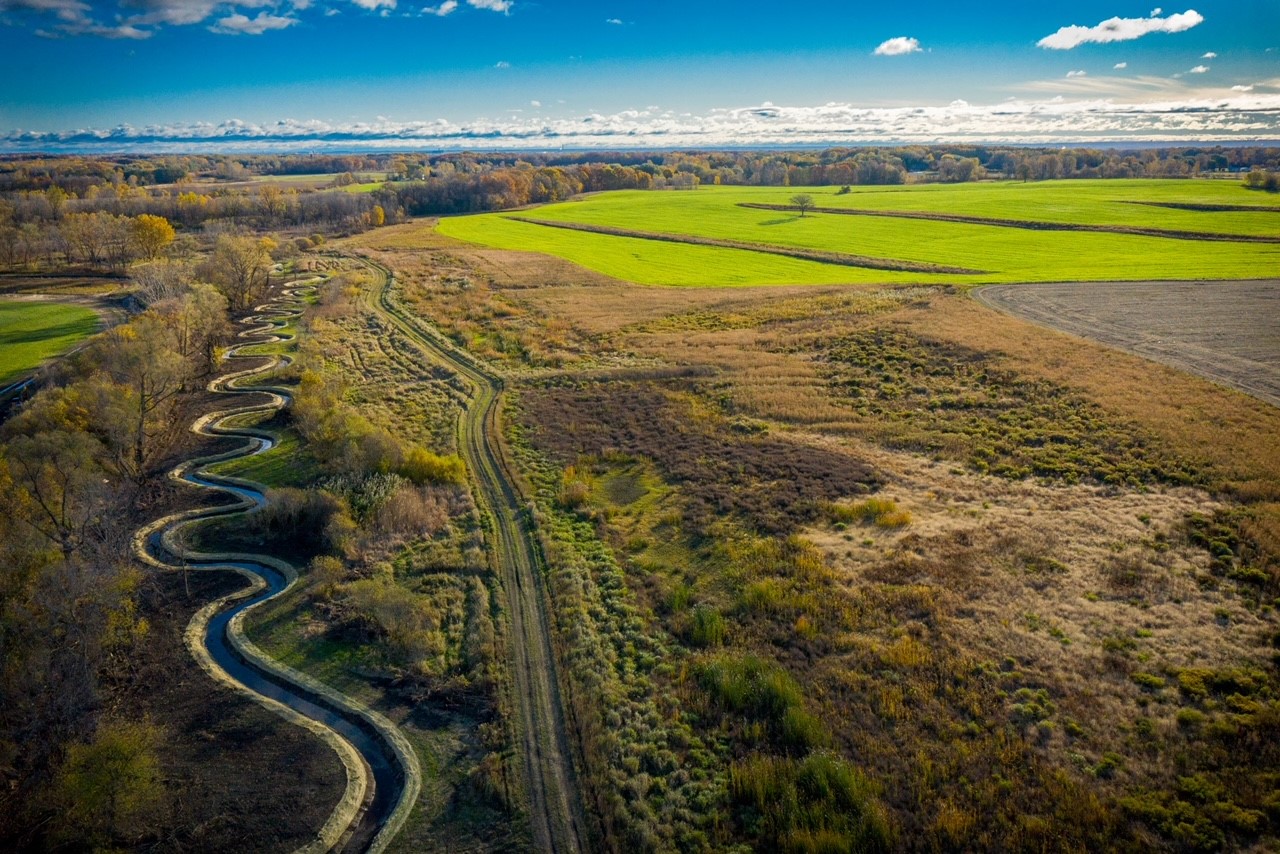Tribal Contacts (i.e., Tribal Environmental Directors)
Combined EPA-Tribal Environmental Plan (ETEP) and Indian Environmental General Assistance Program (GAP) Work Plan Template
Combined ETEP-GAP Workplan
Tribal Contacts (i.e., Tribal Environmental Directors)
OMB:


Photo
Credit: New
Water Organization; Oneida Nation of Wisconsin
Combined
ETEP and GAP Work Plan


Indian Environmental General Assistance Program (GAP) Combined EPA-Tribal Environmental (ETEP) and GAP Work Plan Template
Tribe: EPA Region: Work Plan Period Begins: Work Plan Period Ends: ETEP Time Period: |
This combined ETEP and GAP Work Plan includes requirements listed in the 2022 GAP Guidance and 40 CFR § 35.507, and the Indian Environmental General Assistance Program Act of 1992.
Section 1: Implementation of the Federal Environmental Programs on the Reservation
Including: EPA Regulated Entities & EPA Program Priorities (including Direct Implementation)
As stated in the 2022 GAP Guidance, EPA Regional Offices should develop and provide each Tribe with a draft inventory of federally-regulated entities in Indian country, to be incorporated into the tables below. Tribes may also consider adding regulated entities that are not within Indian country but that may impact the Tribe’s environment. EPA maintains program-specific databases of regulated entities and data query tools that Tribes may use to identify additional regulated entities of interest. See page 18 of the 2022 GAP Guidance for more information.
EPA Regional Offices shall also identify EPA’s Direct Implementation (DI) responsibilities for each Tribe, detailed in the tables below.
A) EPA Direct Implementation
1. |
EPA-Regulated Entities Identified in Indian Country: |
Information about the regulated entities (optional1):
|
Primary Federal Statute and Subsection: and enter Subsection (or, if not listed, type in)
|
Primary EPA Contact (optional):
|
Primary Tribal Contact (optional):
|
Has the Tribe been delegated, authorized, or approved the program? If not, complete the section below.
|
If the answer to the question above is No, complete the following section |
Anticipated EPA Direct Implementation Activities (completed by EPA):
|
Anticipated Tribal Activities to Support EPA Direct Implementation (completed by Tribe) – optional:
|
Tribe’s Long-Term Program Development Goal: (choose one: 1. Tribal Assumption of Program Authority, 2. Meaningful Participation, 3. Solid and Hazardous Waste Implementation, as identified in Section 2 below) |
2. |
EPA-Regulated Entities Identified in Indian Country:
|
Information about the regulated entities (optional):
|
Primary Federal Statute and Subsection: and enter Subsection (or, if not listed, type in)
|
Primary EPA Contact (optional):
|
Primary Tribal Contact (optional):
|
Has the Tribe been delegated, authorized, or approved the program? If not, complete the section below.
|
If the answer to the question above is No, complete the following section: |
Anticipated EPA Direct Implementation Activities (completed by EPA):
|
Anticipated Tribal Activities to Support EPA Direct Implementation (completed by Tribe) – optional:
|
Tribe’s Long-Term Program Development Goal: (choose one: 1. Tribal Assumption of Program Authority; 2. Meaningful Participation; 3. Solid and Hazardous Waste Implementation, as identified in Section 2 below) |
Add (copy and paste) more “EPA-Regulated Entities Identified in Indian Country” tables below, as needed.
B) Additional EPA Program Priorities
List, if applicable (including, for example, regional and national priorities identified in the EPA Strategic Plan or included in National Program Guidance):
Add or remove program priorities, as applicable.
-
Number
EPA Program Priority
1
2
3
4
5
6
7
8
9
10
Section 2: Tribal Priorities and GAP Work Plan
Priority Area
Priority Area Title:
|
Short description of priority area (summary of the proposed work):
|
Capacity indicator(s) associated with this priority: |
Anticipated timeline for completing capacity indicator(s) above (i.e., within this ETEP, or beyond this ETEP):
|
Tribe’s long-term program development goal for this priority area (choose one: 1. Tribal Assumption of Program Authority; 2. Meaningful Participation; 3. Solid and Hazardous Waste Implementation; see page 19 in the 2022 GAP Guidance for more information): [Example: 3. Solid and Hazardous Waste Implementation] |
Requested EPA assistance to support this priority (examples could include: consortia support, coordination/facilitation, site visit, technical assistance, training, etc.):
|
Work Plan Components associated with this priority area are:
|
Work Plan Component
-
Work Plan Component Title:
Funding for this Component: $
Estimated Work Years:
Work Plan Commitments
-
WORK PLAN COMMITMENTS (ACTIVITIES) FOR THIS COMPONENT
TIME FRAME
Outputs AND OUTCOMES (Tribal Roles and responsibilities for commitment)
EPA Roles and responsibilities for commitment, if applicable
1
2
3
4
Work Plan Component
-
Work Plan Component Title:
Funding for this Component: $
Estimated Work Years:
Work Plan Commitments
-
WORK PLAN COMMITMENTS (ACTIVITIES) FOR THIS COMPONENT
TIME FRAME
Outputs AND OUTCOMES (Tribal Roles and RESPONSIBILITIES for commitment)
EPA Roles and RESPONSIBILITIES for commitment, if applicable
1
2
3
4
EPA Use Only: Strategic Goal Information (EPA Order 5700.7A1)
-
[Example: 2022-2026 Strategic Plan]
[Example: Goal 2: Take Decisive Action to Advance Environmental Justice]
[Example: Objective 2.1 Promote Environmental Justice Efforts at the Federal, Tribal, State, and Local Levels]
Add (copy and paste) more component/commitment tables below, as needed.
Priority Area
Priority Area Title: |
Short description of priority area (summary of the proposed work):
|
Capacity indicator(s) associated with this priority:
|
Anticipated timeline for completing capacity indicator(s) above (i.e., within this ETEP, or beyond this ETEP):
|
Tribe’s long-term program development goal for this priority area (choose one: 1. Tribal Assumption of Program Authority; 2. Meaningful Participation; 3. Solid and Hazardous Waste Implementation; see page 19 in the 2022 GAP Guidance for more information): |
Requested EPA assistance to support this priority (examples could include: consortia support, coordination/facilitation, site visit, technical assistance, training, etc.):
|
Work Plan Components associated with this priority area are:
|
Work Plan Component
-
Work Plan Component Title:
Funding for this Component: $
Estimated Work Years:
Work Plan Commitments
-
WORK PLAN COMMITMENTS (ACTIVITIES) FOR THIS COMPONENT
TIME FRAME
Outputs AND OUTCOMES (Tribal Roles and responsIbilities for commitment)
EPA Roles and responsIbilities for commitment, if applicable
1
2
3
4
Work Plan Component
-
Work Plan Component Title:
Funding for this Component: $
Estimated Work Years:
Work Plan Commitments
-
WORK PLAN COMMITMENTS (ACTIVITIES) FOR THIS COMPONENT
TIME FRAME
Outputs AND OUTCOMES (Tribal Roles and responsIbilities for commitment)
EPA Roles and responsIbilities for commitment, if applicable
1
2
3
4
EPA Use Only: Strategic Goal Information (EPA Order 5700.7A1)
-
[Example: 2022-2026 Strategic Plan]
[Example: Goal 2: Take Decisive Action to Advance Environmental Justice]
[Example: Objective 2.1 Promote Environmental Justice Efforts at the Federal, Tribal, State, and Local Levels]
Add (copy and paste) more component/commitment tables below, as needed.
Section 2, Continued: Solid Waste Service Delivery
(Complete if the Tribe is using GAP funds to support solid waste service delivery activities)
As stated in the 2022 GAP Guidance (page 11), the conditions in Sections 1 and 2 below apply to GAP awards that include solid waste and recovered materials collection, transportation, backhaul, and disposal services.
Service delivery activities that support for-profit commercial operations and/or activities outside of Indian country should include justification of direct or indirect Tribal benefit (for example, a Tribal partnership with the local jurisdiction to increase recycling volume to support program sustainability) and appropriate award conditions, such as those related to program income.
Section I: Integrated Waste Management Plan (IWPM) Information |
☐Yes, the Tribe has a current IWMP that includes the relevant information. Date of plan: ______ *Go to Section II
☐No, the Tribe does not have a current IWMP that includes the relevant information. *Complete the information below and then go to Section II
1) A description of the Tribe’s waste management program structure and administration:
2) Current and proposed waste management practices:
3) Description of the community service area:
|
Section II: Additional Conditions |
☐Yes (continue to next question) ☐No (do not move to next question – this should be a listed priority in the Tribe’s ETEP to receive funding) |
|
Work Plan Component
-
Work Plan Component Title:
Funding for this Component: $
Estimated Work Years:
Work Plan Commitments
-
WORK PLAN COMMITMENTS (ACTIVITIES) FOR THIS COMPONENT
TIME FRAME
Outputs AND OUTCOMES (Tribal Roles and responsIbilities for commitment)
EPA Roles and responsIbilities for commitment, if applicable
1
2
3
4
Section 3: Performance Evaluation Process and Reporting Schedule
A GAP work plan should have a performance evaluation process and reporting schedule in accordance with work plan requirements in 40 CFR § 35.507. The schedule must require the Tribe to report at least annually and must satisfy the requirements for progress reporting under 2 CFR 200.329.
The joint evaluation process requirements are specifically outlined in § 35.515 and include:
A discussion of accomplishments as measured against work plan commitment,
A discussion of the cumulative effectiveness of the work performed under all work plan components,
A discussion of existing and potential problem areas, and
Suggestions for improvement, including, where feasible, schedules for making improvements.
Resolution of issues. If the joint evaluation reveals that the Tribe has not made sufficient progress under the work plan, the Region and the Tribe will negotiate a resolution that addresses the issues. If the issues cannot be resolved through negotiation, the Region may take appropriate measures under 2 CFR 200.339–200.243. The Tribe may request a review of the Regional Administrator's decision under the dispute processes in 2 CFR part 1500, subpart E.
Evaluation reports. The Region will ensure that the required evaluations are performed according to the negotiated schedule and that copies of evaluation reports are placed in the official files and provided to the Tribe.
Burden Statements. This collection of information is approved by OMB under the Paperwork Reduction Act, 44 U.S.C. 3501 et seq. (OMB Control No. 2090-NEW). Responses to this collection of information are mandatory [40 CFR § 35.507]. An agency may not conduct or sponsor, and a person is not required to respond to, a collection of information unless it displays a currently valid OMB control number. The public reporting and recordkeeping burden for this collection of information is estimated to be 20 hours per response. Send comments on the Agency’s need for this information, the accuracy of the provided burden estimates and any suggested methods for minimizing respondent burden to the Information Engagement Division Director, U.S. Environmental Protection Agency (2821T), 1200 Pennsylvania Ave., NW, Washington, D.C. 20460. Include the OMB control number in any correspondence. Do not send the completed form to this address.
1 “Optional” refers to information that is not required.
| File Type | application/vnd.openxmlformats-officedocument.wordprocessingml.document |
| File Title | Combined ETEP and GAP Work Plan |
| Author | American Indian Environmental Office |
| File Modified | 0000-00-00 |
| File Created | 2024-07-22 |
© 2026 OMB.report | Privacy Policy